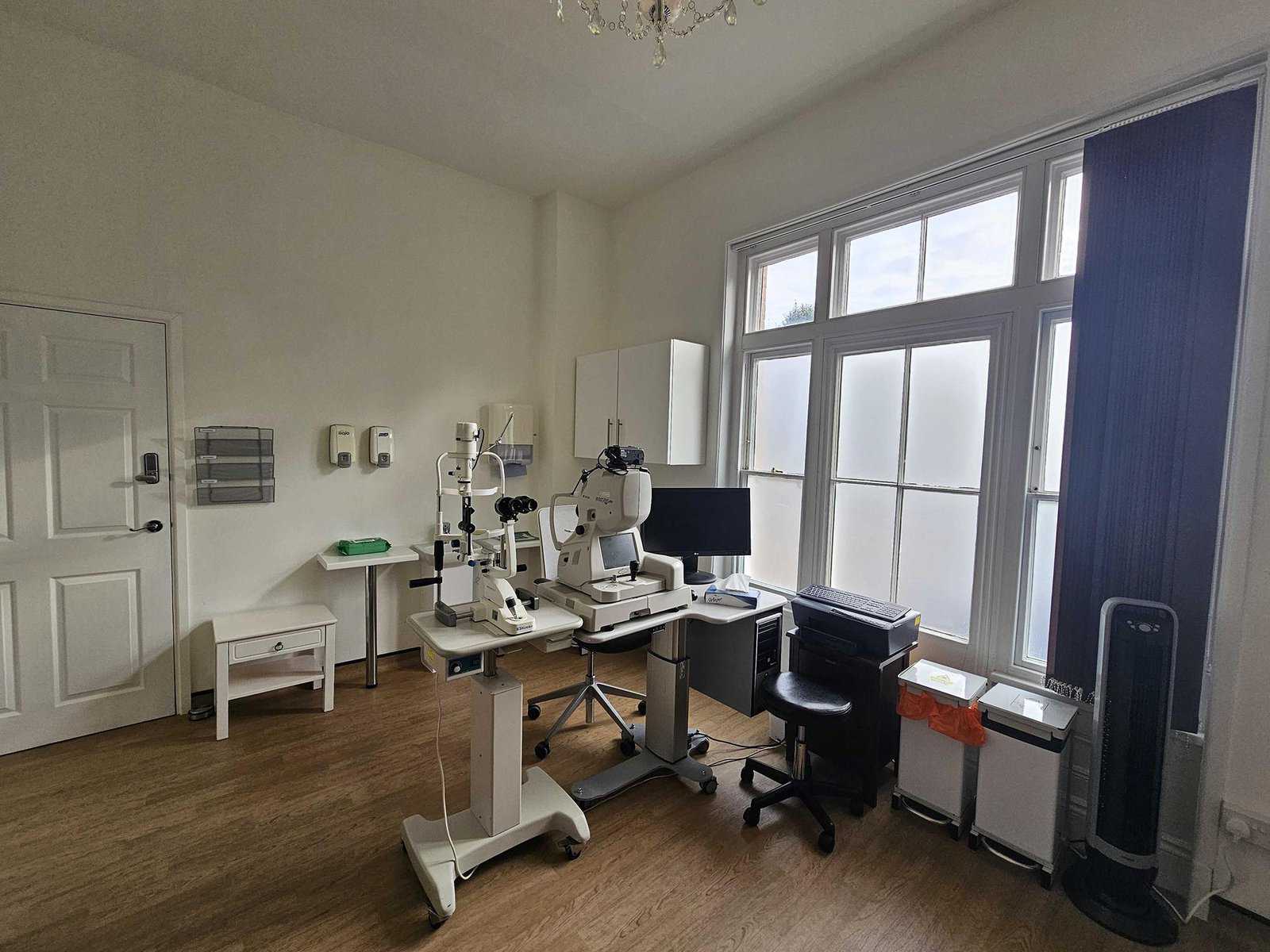Expert Vabysmo (Faricimab) Treatment
Protect your vision with advanced Vabysmo (Faricimab) treatment at The Forbury Clinic. Submit an enquiry for a consultation and discover our cutting-edge treatment options.

Overview
Vabysmo (Faricimab) is a groundbreaking treatment for retinal conditions like wet age-related macular degeneration (AMD) and diabetic macular edema (DME). It works by targeting multiple pathways to reduce fluid leakage and abnormal blood vessel growth in the retina. Early intervention with Vabysmo is crucial to maintaining vision and preventing further complications. At The Forbury Clinic, we offer personalised care and the latest techniques in administering Vabysmo. Contact us today to learn more and schedule a consultation.


What is Vabysmo (Faricimab)?
Vabysmo (Faricimab) is an innovative medication used to treat serious retinal conditions that can lead to vision loss. It is administered via intravitreal injection, directly into the eye. Vabysmo works by inhibiting both VEGF and Ang-2, proteins that promote abnormal blood vessel growth and inflammation in the retina. This dual-action approach helps reduce fluid leakage, stabilise vision, and prevent disease progression. Common conditions treated with Vabysmo include wet age-related macular degeneration (AMD) and diabetic macular edema (DME). Patients typically experience improved visual acuity and a reduction in retinal swelling following treatment.
Causes and Risk Factors
Vabysmo is used to treat conditions caused by abnormal blood vessel growth and fluid leakage in the retina. The underlying causes and risk factors for these conditions include:
Wet Age-Related Macular Degeneration (AMD):
Age: Risk increases significantly after age 50.
Genetics: Family history of AMD.
Smoking: Increases the risk of AMD.
Diet: Poor diet lacking in antioxidants and omega-3 fatty acids.
Diabetic Macular Edema (DME):
Diabetes: Prolonged high blood sugar levels damage blood vessels in the retina.
Hypertension: High blood pressure can exacerbate retinal damage.
High Cholesterol: Contributes to blood vessel damage.
Retinal Vein Occlusion (RVO):
Age: RVO is more common in people over the age of 60.
Hypertension: High blood pressure increases the risk of blockages in retinal veins.
Diabetes: Blood vessel damage associated with diabetes can lead to RVO.
High Cholesterol: Elevated cholesterol levels contribute to plaque buildup, which can block blood flow in retinal veins.
Smoking: Smoking can damage blood vessels, increasing the likelihood of vein occlusion.
Glaucoma: Increased eye pressure can be a contributing factor in RVO.
Understanding these causes and risk factors helps in the early diagnosis and effective management of conditions treated with Vabysmo, improving patient outcomes.
Diagnosis
Diagnosing the conditions treated with Vabysmo involves a thorough evaluation at The Forbury Clinic. The diagnostic process includes:
- Initial Consultation: Discussing symptoms, medical history, and potential risk factors with a specialist.
- Visual Acuity Test: Assessing the clarity and sharpness of your vision.
- Dilated Eye Exam: Using drops to dilate the pupils and examine the retina and macula for signs of disease.
- Optical Coherence Tomography (OCT): Imaging the retina to detect fluid accumulation, swelling, or abnormal blood vessels.
These steps ensure a thorough and accurate diagnosis, aiding in the development of an effective treatment plan.

Treatment Options
Based on the diagnosis, Vabysmo (Faricimab) is administered as part of a comprehensive treatment plan for various retinal conditions:
- Non-Surgical Options
- Combination Therapies
- Follow-Up Care
Vabysmo Injections:
Administered directly into the eye to block VEGF and Ang-2, reducing fluid leakage and preventing abnormal blood vessel growth.
Lifestyle Changes:
Encouraging a healthy diet, regular exercise, and smoking cessation to support overall eye health.
Laser Therapy:
Used in conjunction with Vabysmo to treat abnormal blood vessels in conditions like wet AMD and DME.
Anti-VEGF Medications:
Combining Vabysmo with other anti-VEGF drugs for enhanced efficacy in certain cases.
Regular Monitoring:
Scheduling frequent check-ups to monitor treatment progress and adjust the treatment plan as needed.
Additional Injections:
Administering further Vabysmo injections based on the patient’s response to treatment and disease progression.
At The Forbury Clinic, our multidisciplinary team ensures that each patient receives the most appropriate and effective treatment, tailored to their specific needs and health goals.
Managing Conditions Treated with Vabysmo
Managing conditions treated with Vabysmo involves a combination of medical treatments and lifestyle adjustments to control symptoms and improve overall quality of life. At The Forbury Clinic, we provide comprehensive care and guidance to help manage these conditions:
Healthy Diet:
Encouraging a diet rich in fruits, vegetables, and omega-3 fatty acids.
Regular Exercise:
Promoting physical activity to improve overall health and blood flow to the eyes.
Blood Sugar Control:
Managing diabetes effectively to prevent further eye damage.
Blood Pressure Management:
Keeping blood pressure within a healthy range to reduce the risk of complications.
Routine Eye Exams:
Scheduling frequent check-ups to monitor eye health and adjust treatment as necessary.
These management strategies aim to complement medical treatments and provide a holistic approach to preserving vision and overall well-being.
Complications and Prognosis
While Vabysmo is effective in managing various retinal conditions, it is important to be aware of potential complications and the prognosis:
Complications:
- Eye Infections: Risk of infection at the injection site.
- Increased Intraocular Pressure: Elevated pressure inside the eye.
- Retinal Detachment: Although rare, this can occur following intravitreal injections.
Prognosis:
The prognosis for patients receiving Vabysmo treatment is generally positive, with many individuals experiencing significant improvement in vision and slowing of disease progression. Regular follow-ups and ongoing management are crucial to prevent complications and ensure optimal eye health.


Why Choose The Forbury Clinic?
Choosing The Forbury Clinic for your Vabysmo treatment ensures you receive exceptional care from a team of experienced specialists. Our clinic is renowned for its expert medical staff who are dedicated to diagnosing and treating retinal conditions with precision and compassion. We use state-of-the-art diagnostic tools and the latest medical advancements to provide accurate diagnoses and innovative treatments tailored to your specific needs. Our patient-centered approach prioritises your comfort, privacy, and overall well-being, offering comprehensive support throughout your treatment journey. At The Forbury Clinic, you can trust that you are in capable hands, with a dedicated team committed to helping you achieve optimal eye health and a better quality of life.
